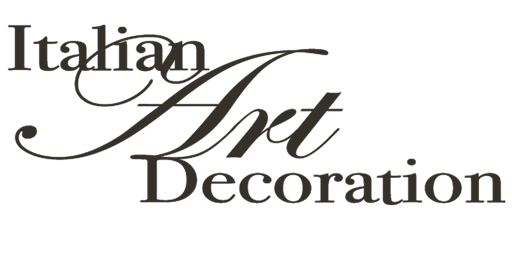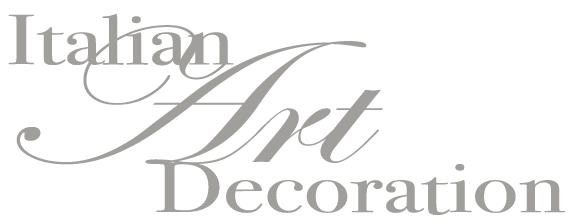Why using gypsum?
Gypsum is the main material used in IAD’s productions. It is a natural, eco-friendly, malleable and easy to work with element: for these reasons, since the Classic period, many artists have been able to create pieces of art that have survived until today, precious historical and artistic artefacts of humankind. As far as regards its classical production, Italian Art Decoration uses the same traditional materials without any change in its standard formula, however we are constantly committed to seeking new gypsums, new additives and new materials in order to fully satisfy the designers’ requirements, especially where a greater regard for natural environment, lightness of the product, ruggedness, fire resistance and ease of installation are required.
Advantages of gypsum
The advantages of using gypsum as construction material are as follows:
- it has no environmental impact;
- it is a hard, strong material;
- it is easy to work with;
- it is an inexpensive material;
- its installation is modular and mechanic;
- it is light and malleable;
- it is a class “0” non-combustible;
- the quality of our gypsum products is granted by the high IAD quality standards.
Italian Art Decoration is specialized in the use of:
- Natural fibrous Gypsum;
- GRG (Glass Reinforced Gypsum);
- Resined Gypsum;
- Navaliad Gyps – Gypsum for naval use.
What it is: the natural fibrous gypsum is a mixture made of gypsum alabaster, mainly composed of calcium sulfate and additives that improve its workability and its mechanical strengh. During the decorations production phase, manila fiber (a natural, fat-free dry, carded fiber) is added to the mixture in order to increase the mixture’s resistance. In cases of both false ceilings and decorations, a reinforcement composed of galvanized steel rods is inserted; these rods are crossed arranged and previously moulded and/or curved depending on the shape of the decorations.
Where it can be used: the natural fibrous gypsum is suitable for creating moulds and plaster products like frames and rosaces, for grouting and for the integration of ceramics. It is used to produce plaster gypsum mouldings and ceiling panels as well.
Advantages: it is non-combustible (elements and decorations are only made of 1% fiber and therefore they are fire-resistant), the installation is very easy and plaster elements can be cast in any shape.
Surface finishing: plaster gypsum elements are normally white but the mixture can be colored in black, red or yellow in order to facilitate the finishing operations whenever a colored or a marble effect surface is demanded.
What is it: GRG is a material composed of a thin layer of alpha crystalline gypsum and alternately arranged layers of glass fiber filaments. This fiber allows the creation of very light and thin pieces, as it provides the product with a high level of resistance to compressions and flexings. The plaster gypsum is neutral or low alkaline, which grants compatibility with the glass fibers.
Origins: at the end of the Seventies a new material developped in England was exported to the US and Canada: nowadays, this product is known as Glass fiber Reinforced Gypsum. In a short period of time, American producers started to promote and sell products made of GRG. At the end of 1978 GRG products were distributed and sold all over North America.
Where it can be used: it is suitable for the creation of boiserie, skirtings, furnishing accessories, columns, especially in crowded public areas. GRG may also be used in the interiors, whenever a strong and fire-resistant material is needed (for example, in casinos, hotels, theatres, private houses). It has various applications in the costruction industry, but GRG is also widely used in cruise ships, hotels, spas and thermal centres, and for restoration works.
Advantages: GRG is a mineral therefore it doesn’t burn. Moreover, thanks to the nature of gypsum, GRG shields other materials for a maximum of two hours. It is quite light compared to traditional stone or gypsum ornaments. Its installation is fast and easy and the material is highly flexible, which makes GRG suitable for complex geometries ceilings or for cladding decorations.
Surface finishing: GRG is available in white colour and the surface can be finished by application of any kind of varnish.
What is it: Resined gypsum is a synthetic resin that appears like a very fine white powder, similar to gypsum, to be mixed with water. It ensures a quick hardening with no need of cooking. Models created with resined gypsum are a perfect copy of the original ones and they are characterised by a very high level of hardness and compactness that can’t be found in any other ceramic gypsum.
Where it can be used: Resined gypsum is particularly suitable for wet rooms like swimming pools, bathrooms, saunas and, in general, for the production of high quality accessories (for example, frames, rosaces, columns, fireplaces, shelves).
Advantages: Elements and ornaments are non-combustible, the installation is easy and plaster elements can be cast in any shape. Products are very resistant and their degree of precision is very high.
Surface finishing: plaster gypsum elements are usually white or yellowish, but they can be either mass or surface-coloured.
What is it: Navaliad Gyps is a mixture made from gypsum alabaster, mainly composed of calcium sulfate and additives. During the manufacturing process, manila fiber (a natural, fat-free dry, carded fiber) is added to the mixture in order to increase its resistance. The peculiarity of the Navaliad Gyps consists in a higher level of fire resistance, which is certified by Istituto Giordano S.p.A. (a technical organisation at the forefront on product testing, certification, research, design and training, recognised by the Italian Government and by international authorities), in accordance with the EU directive 2012/32 about the denomination of “non-combustible materials” used for the production of elements and decorations to be placed onboard cruise ships.
Where it can be used: Navaliad Gyps is suitable for the production of ornaments intended to be placed onboard cruise ships.
Advantages: It is extremely fire-resistant, the installation is easy and plaster elements can be cast in any shape.
Surface finishing: Plaster gypsum elements are usually white or yellowish, but they can be either mass or surface-coloured.


